 | |
Type of site | Travel, ecotourism, itinerary, travel guides |
|---|---|
| URL | In construction |
| Launched | 2013-09 (10 years' prior consultation with the international organizations for the creation of the routes network) |
There are five ecotourism Pan-European routes crossing 35 countries in Europe which connect natural parks (national parks and regional parks) to either selected UNESCO heritage sites or biosphere reserves (MAB).[1]
The routes are intended to help travelers discover natural, cultural and pilgrimage sites as well as providing opportunities to experience regional specialties.
History
1995
The European Federation of the Mountain (EFM), being concerned with the rural development of its territories, had a consultant represent it at an OECD workshop (Organisation for Economic Cooperation and Development) devoted to the research of "niche markets and rural development."[2]
Twenty country members of the OECD and the Council of Europe were represented to discuss the proposals from three experts from the private sector and five consultants from the Expert Committee Initiative Leader Europe.
The edition of the OECD No. 48256 1995 published the summary of this workshop. In Chapter 5, Pierre Guerry, consultant of the Federation, presents the two new axes to be considered to ensure balanced regional development of the rural areas: Quality Certification and Designations of Origin.
Given the difficulty of selling local products (although these products are all attached to the same territory, they often do not have other links between them), the consultant proposed the promotion of the regional specialties of each territory along with its natural and cultural heritages. He considered that the natural and cultural heritages could promote the qualified products that claim territorial identity. These "home sites" do not generate a large turnover, but they can create a flow of visitors interested in exploring regional specialties in memory of their stay or passage.
The consultant's proposal was to create a European network of natural and cultural heritages combined with regional crafts, promoted at a European level to develop a sustainable rural economy. The target clientele is European residents and visitors from other continents, sensitive to environmental preservation, local culture and tradition, including regional specialties.
1998
The "ecological science" division of UNESCO supports this private initiative by offering 120 MAB (man and biosphere) accredited by this organisation and 250 national parks in Europe, representative of the natural heritage of the main regions. The MAB, national and regional parks are interconnected to form the network of the ecotourism pan-European routes.
The consultant asked the PhD students of the Alpine Geography Institute of Grenoble to establish a first map of this network, called the "European Touring Nature Map". The direction of this UNESCO Division gave written permission to the consultant to affix its logo on the European map.
2000
A first test was executed in the Aosta Valley in Italy with the European Regional Development Fund (ERDF) DG XVI at that time. On this occasion the European foldable map in four languages was published in 1000 copies. On the back of the map, 51 local professionals were presented and located to facilitate the travelers' visits.
2002
The tourism expert of the United Nations Environment Programme (UNEP), after several hearings, responded favorably to the ten questions used expertise of this private initiative.
2005
A second test was executed in the region of Lake Tisza in Hungary. The jury was with the Sweden president of the group "Rural Economy and Sustainable Tourism" from the Assembly of European Regions, an NGO with a membership of 270 regions in Europe.
Four counties, 73 villages and 150 local professionals participated in the test and signed the project charter to preserve their local environment, natural, cultural heritage and regional specialties. On this occasion, 5000 maps in two languages were published. These maps had a first layout of the five European routes, Atlantic, Mediterranean, Nordic, Central and Western route. Approved by the rural tourism group of the Assembly of European Regions, the route map took the following denomination: Touring Nature, the Pan European Routes to rural tourism (based on the village + sustainable development European label).
The Minister of Planning and Hungarian Tourism gave a press conference before a dozen journalists from the print and two television channels. He considered this private initiative as an example to follow for all the regional territories in Europe wishing to promote their specificities.
2007
The Assembly of European Regions presented the project to EU funding to enable that the local authorities could co-finance this project to create quickly this network. The enlargement of the European Union imposed other funding priorities in view of the enlargement of the Union to ten new states. The project could not continue to be financed from the European fund, and thus the consultant who is also the project initiative chose to continue to fund its development with his own funding.
2010
The consultant who had organized several trips to the United States favored the transfers of experience on the European project. Indeed, the US attracts 280 million visitors every year to visit the 300 sites represented on a map (National Park System Map), which covers 391 US regions of the US. 10% of the visitors are not resident on this continent. The MAB and World Heritage labeled by UNESCO are the "home sites" which attract at once the hikers and the campers. To provide the visitors with the various services, NPS signed the contracts with 630 private companies, mainly SMEs of local products, accommodations and sports activities.
Therefore, the MAB and the natural sites labeled by UNESCO in Europe can also become the "home sites" for all visitors. The strategy of the consultant, favorable to the development of a local rural economy, was confirmed by UNESCO who has selected the "home sites" for the ecotourism pan-European routes.
2013
The ecotourism pan-European routes finalized the layout of the five routes across 36 countries, 230 regions, 154 stages and 180 sub-steps.
It proposed another way to discover Europe.
2015
It was proposed to all the regional specialties manufacturers in Europe to be referenced on the ecotourism pan-European routes that geo locate "1000 ecotourism attractions to visit in Europe: natural, cultural and handicraft." Thus the main manufacturing sites of the regional specialties from the 36 countries can contribute to the financing of these routes, which are transferring the North Americans' expertise who have proved its success. They support also the development of the local economy, which in turn promote the awareness of local products.
An application and a dynamic website are being created to make sure the localization of the regional specialties manufacturers referenced at the European level. The visitors can also operate easily with their mobile phones and tablets to organize their trips.
The five ecotourism pan-European routes
The Mediterranean route (about 8000 km)
This route has a variety of terrain including blue waters, marine coasts and creeks, caves, beaches, and southern market places. The streets have a warm and lively atmosphere where traditional festivals take place. For centuries, Mediterranean Europe has attracted people to the Greek and Roman sites of their civilizations' birthplaces and lovers of mythology.
This route crosses 10 countries.
 Portugal : 1 stage, 1 region
Portugal : 1 stage, 1 region Spain : 6 stages, 12 sub-steps, 3 regions, 8 natural parks, 12 UNESCO sites, 3 pilgrimage sites
Spain : 6 stages, 12 sub-steps, 3 regions, 8 natural parks, 12 UNESCO sites, 3 pilgrimage sites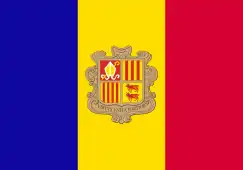 Andorra : 1 stage, 1 UNESCO site
Andorra : 1 stage, 1 UNESCO site France : 4 stages, 15 sub-steps, 3 regions, 9 natural parks, 8 UNESCO sites, 6 pilgrimage sites
France : 4 stages, 15 sub-steps, 3 regions, 9 natural parks, 8 UNESCO sites, 6 pilgrimage sites Italy : 9 stages, 16 sub-steps, 12 regions, 21 natural parks, 22 UNESCO sites, 6 pilgrimage sites
Italy : 9 stages, 16 sub-steps, 12 regions, 21 natural parks, 22 UNESCO sites, 6 pilgrimage sites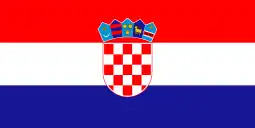 Croatia : 1 stage, 5 sub-steps, 4 regions, 5 natural parks, 6 UNESCO sites
Croatia : 1 stage, 5 sub-steps, 4 regions, 5 natural parks, 6 UNESCO sites Bosnia and Herzegovina : 1 stage, 1 sub-step, 1 region, 1 natural park, 1 UNESCO site, 2 pilgrimage sites
Bosnia and Herzegovina : 1 stage, 1 sub-step, 1 region, 1 natural park, 1 UNESCO site, 2 pilgrimage sites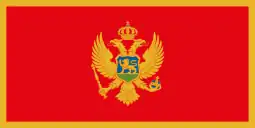 Montenegro : 1 stage, 1 sub-step, 1 region, 2 natural parks, 1 UNESCO site
Montenegro : 1 stage, 1 sub-step, 1 region, 2 natural parks, 1 UNESCO site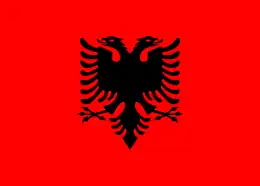 Albania : 2 stages, 6 sub-steps, 6 regions, 1 natural park, 2 UNESCO sites
Albania : 2 stages, 6 sub-steps, 6 regions, 1 natural park, 2 UNESCO sites Greece: 1 stage, 5 sub-steps, 3 regions, 5 natural parks, 4 UNESCO sites
Greece: 1 stage, 5 sub-steps, 3 regions, 5 natural parks, 4 UNESCO sites
The Atlantic route (about 8300 km)
This route lets North and South Americans get to know the origins of their culture and history. It is a way to discover in a short time different European lifestyles: the typical Anglo-Saxon life of the Irish, the Scottish, the Welsh and the English, French gastronomy, late evening life and animated Southern European villages in Spain and Portugal.
This route crosses five countries.
 Portugal : 3 stages, 11 sub-steps, 3 regions, 5 natural parks, 7 UNESCO sites, 1 pilgrimage site
Portugal : 3 stages, 11 sub-steps, 3 regions, 5 natural parks, 7 UNESCO sites, 1 pilgrimage site Spain : 3 stages, 13 sub-steps, 4 regions, 8 natural parks, 4 UNESCO sites, 3 pilgrimage sites
Spain : 3 stages, 13 sub-steps, 4 regions, 8 natural parks, 4 UNESCO sites, 3 pilgrimage sites France : 11 stages, 34 sub-steps, 7 regions, 12 natural parks, 4 UNESCO sites, 10 pilgrimage sites
France : 11 stages, 34 sub-steps, 7 regions, 12 natural parks, 4 UNESCO sites, 10 pilgrimage sites United Kingdom : 9 stages, 28 sub-steps, 17 regions, 16 natural parks, 14 UNESCO sites, 1 pilgrimage site
United Kingdom : 9 stages, 28 sub-steps, 17 regions, 16 natural parks, 14 UNESCO sites, 1 pilgrimage site Ireland : 3 stages, 13 sub-steps, 3 regions, 4 natural parks, 1 UNESCO site, 1 pilgrimage site
Ireland : 3 stages, 13 sub-steps, 3 regions, 4 natural parks, 1 UNESCO site, 1 pilgrimage site
The Nordic route (about 11500 km)
This route crosses countries extraordinarily rich in historical castles, large cathedrals, churches and museums. It takes visitors along the champagne and Beaujolais road in France and to the famous windmills of the Netherlands. In the great outdoors one will find countless lakes in Finland, fjords in Norway, and immense forests of Sweden. The northern route returns to the heart of Europe through the Baltic countries. One can find cities full of history, architecture, culture and nightlife.
This route crosses 13 countries.
 France : 6 stages, 20 sub-steps, 4 regions, 9 natural parks, 7 UNESCO sites, 5 pilgrimage sites
France : 6 stages, 20 sub-steps, 4 regions, 9 natural parks, 7 UNESCO sites, 5 pilgrimage sites.svg.png.webp) Belgium: 1 stage, 5 sub-steps, 3 regions, 1 natural park, 8 UNESCO sites, 1 pilgrimage site
Belgium: 1 stage, 5 sub-steps, 3 regions, 1 natural park, 8 UNESCO sites, 1 pilgrimage site Netherlands: 3 stages, 13 sub-steps, 8 regions, 9 natural parks, 6 UNESCO sites, 1 pilgrimage site
Netherlands: 3 stages, 13 sub-steps, 8 regions, 9 natural parks, 6 UNESCO sites, 1 pilgrimage site Germany: 3 stages, 9 sub-steps, 3 regions, 7 natural parks, 3 UNESCO sites, 1 pilgrimage site
Germany: 3 stages, 9 sub-steps, 3 regions, 7 natural parks, 3 UNESCO sites, 1 pilgrimage site Denmark: 1 stage, 1 sub-step, 1 region, 1 UNESCO site
Denmark: 1 stage, 1 sub-step, 1 region, 1 UNESCO site Sweden: 4 stages, 10 sub-steps, 4 regions, 6 natural parks, 4 UNESCO sites
Sweden: 4 stages, 10 sub-steps, 4 regions, 6 natural parks, 4 UNESCO sites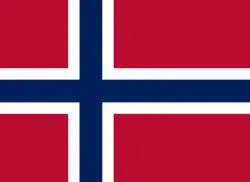 Norway: 6 stages, 8 sub-steps, 4 regions, 8 natural parks, 4 UNESCO sites, 1 pilgrimage site
Norway: 6 stages, 8 sub-steps, 4 regions, 8 natural parks, 4 UNESCO sites, 1 pilgrimage site Finland: 7 stages, 14 sub-steps, 7 regions, 14 natural parks, 4 UNESCO sites
Finland: 7 stages, 14 sub-steps, 7 regions, 14 natural parks, 4 UNESCO sites Estonia: 2 stages, 5 sub-steps, 6 regions, 3 natural parks, 1 UNESCO site
Estonia: 2 stages, 5 sub-steps, 6 regions, 3 natural parks, 1 UNESCO site Latvia: 1 stage, 6 sub-steps, 2 regions, 2 natural parks, 1 UNESCO site
Latvia: 1 stage, 6 sub-steps, 2 regions, 2 natural parks, 1 UNESCO site Lithuania: 1 stage, 4 sub-steps, 2 regions, 5 natural parks, 1 pilgrimage site
Lithuania: 1 stage, 4 sub-steps, 2 regions, 5 natural parks, 1 pilgrimage site Russia: 1 stage
Russia: 1 stage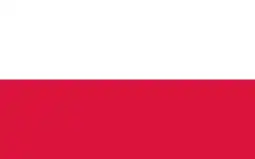 Poland: 3 stages, 6 sub-steps, 1 region, 1 natural park, 2 UNESCO sites, 1 pilgrimage site
Poland: 3 stages, 6 sub-steps, 1 region, 1 natural park, 2 UNESCO sites, 1 pilgrimage site
The Occidental route (about 10400 km)
This route crosses countries where historical events are still deeply rooted in peoples' minds. One can discover these countries and their natural and cultural heritages: from the Carpathians Mountains, the Great Plain in Hungary to the Danube River which flows into the Black Sea, the landscapes change quickly. The route lets visitors discover the wealth of architectural heritage and artistic talents - music, painting, and writing, that strengthen the authenticity of the folklore and the local traditions in these countries. One can also discover must see natural sites in Switzerland and the Alps including Mont Blanc.
This route crosses 14 countries.
 France : 5 stages, 22 sub-steps, 2 regions, 10 natural parks, 2 UNESCO sites, 8 pilgrimage sites
France : 5 stages, 22 sub-steps, 2 regions, 10 natural parks, 2 UNESCO sites, 8 pilgrimage sites Italy : 3 stages, 7 sub-steps, 3 regions, 8 natural parks, 3 UNESCO sites, 5 pilgrimage sites
Italy : 3 stages, 7 sub-steps, 3 regions, 8 natural parks, 3 UNESCO sites, 5 pilgrimage sites.svg.png.webp) Switzerland : 1 stage, 7 sub-steps, 8 regions, 1 natural park, 2 UNESCO sites, 2 pilgrimage sites
Switzerland : 1 stage, 7 sub-steps, 8 regions, 1 natural park, 2 UNESCO sites, 2 pilgrimage sites Germany : 1 stage, 4 sub-steps, 1 region, 1 natural park, 1 UNESCO site, 3 pilgrimage sites
Germany : 1 stage, 4 sub-steps, 1 region, 1 natural park, 1 UNESCO site, 3 pilgrimage sites Austria : 3 stages, 7 sub-steps, 3 regions, 2 natural parks, 5 UNESCO sites, 3 pilgrimage sites
Austria : 3 stages, 7 sub-steps, 3 regions, 2 natural parks, 5 UNESCO sites, 3 pilgrimage sites Czech Republic : 1 stage, 5 sub-steps, 5 regions, 1 natural park, 6 UNESCO sites, 1 pilgrimage site
Czech Republic : 1 stage, 5 sub-steps, 5 regions, 1 natural park, 6 UNESCO sites, 1 pilgrimage site Poland : 2 stages, 2 sub-steps, 2 regions, 3 natural parks, 2 UNESCO sites, 1 pilgrimage site
Poland : 2 stages, 2 sub-steps, 2 regions, 3 natural parks, 2 UNESCO sites, 1 pilgrimage site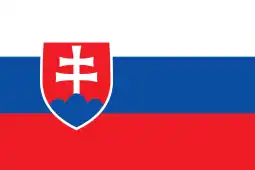 Slovakia : 1 stage, 2 sub-steps, 2 regions, 1 natural park, 2 UNESCO sites
Slovakia : 1 stage, 2 sub-steps, 2 regions, 1 natural park, 2 UNESCO sites Ukraine : 1 stage, 1 sub-step, 1 region, 1 natural park
Ukraine : 1 stage, 1 sub-step, 1 region, 1 natural park Hungary : 2 stages, 5 sub-steps, 5 regions, 5 natural parks, 3 UNESCO sites, 2 pilgrimage sites
Hungary : 2 stages, 5 sub-steps, 5 regions, 5 natural parks, 3 UNESCO sites, 2 pilgrimage sites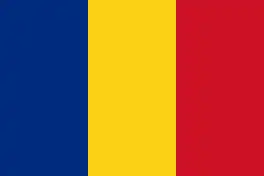 Romania : 5 stages, 10 sub-steps, 4 regions, 11 natural parks, 4 UNESCO sites
Romania : 5 stages, 10 sub-steps, 4 regions, 11 natural parks, 4 UNESCO sites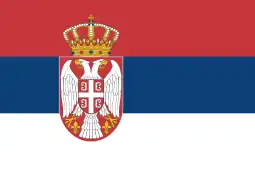 Serbia : 3 stages, 7 sub-steps, 1 region, 2 natural parks, 1 UNESCO site
Serbia : 3 stages, 7 sub-steps, 1 region, 2 natural parks, 1 UNESCO site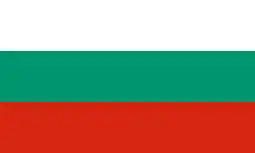 Bulgaria : 5 stages, 10 sub-steps, 13 regions, 2 natural parks, 5 UNESCO sites, 1 pilgrimage site
Bulgaria : 5 stages, 10 sub-steps, 13 regions, 2 natural parks, 5 UNESCO sites, 1 pilgrimage site Turkey : 2 stages, 3 sub-steps, 1 region, 1 UNESCO site, 1 pilgrimage site
Turkey : 2 stages, 3 sub-steps, 1 region, 1 UNESCO site, 1 pilgrimage site
The Central route (about 7200 km)
This route crosses the northern Great Plain with vast forests to bring visitors then to the Czech mountain ranges with their folklore. Then it lets one discover the landscapes of Poland and Belarus. The central route ends in Moscow.
This route crosses eight countries.
 France : 6 stages, 18 sub-steps, 4 regions, 7 natural parks, 4 UNESCO sites, 11 pilgrimage sites
France : 6 stages, 18 sub-steps, 4 regions, 7 natural parks, 4 UNESCO sites, 11 pilgrimage sites Luxembourg : 4 sub-steps, 3 regions, 1 natural park, 1 UNESCO site, 1 pilgrimage site
Luxembourg : 4 sub-steps, 3 regions, 1 natural park, 1 UNESCO site, 1 pilgrimage site Germany : 5 stages, 13 sub-steps, 6 regions, 3 natural parks, 14 UNESCO sites, 1 pilgrimage site
Germany : 5 stages, 13 sub-steps, 6 regions, 3 natural parks, 14 UNESCO sites, 1 pilgrimage site Czech Republic : 1 stage, 2 sub-steps, 2 regions, 2 natural parks, 1 UNESCO site
Czech Republic : 1 stage, 2 sub-steps, 2 regions, 2 natural parks, 1 UNESCO site Poland : 4 stages, 8 sub-steps, 5 regions, 7 natural parks, 5 UNESCO sites, 2 pilgrimage sites
Poland : 4 stages, 8 sub-steps, 5 regions, 7 natural parks, 5 UNESCO sites, 2 pilgrimage sites Lithuania : 1 stage, 3 sub-steps, 3 regions, 2 natural parks, 2 UNESCO sites, 1 pilgrimage site
Lithuania : 1 stage, 3 sub-steps, 3 regions, 2 natural parks, 2 UNESCO sites, 1 pilgrimage site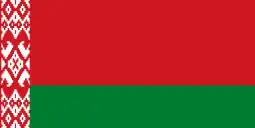 Belarus : 2 stages, 1 sub-step, 2 regions
Belarus : 2 stages, 1 sub-step, 2 regions Russia : 5 stages, 7 sub-steps, 1 region, 2 natural parks, 7 UNESCO sites
Russia : 5 stages, 7 sub-steps, 1 region, 2 natural parks, 7 UNESCO sites
Why to create the ecotourism pan-European routes?
Europe possesses a particularly rich and diversified natural and cultural heritage which the whole world would like to know of in a simple way. The ecotourism pan-European routes give one an opportunity to discover these places:
Who created the ecotourism pan-European routes?
It is a private initiative, but many international organisations were consulted.
The UNESCO MAB
The Ecological Sciences division of MAB (Man and the Biosphere) of UNESCO proposed a selection of the outstanding sites for their landscapes or their architectures and for the specificity of local products.
The UNEP
The UNEP (United Nations Environmental Program) considered this international project interesting for sustainable tourism in that it attracts the attention of the local professionals, travellers' transport networks, such as touring clubs, automobile clubs, and associations for recreational vehicles and hikers.
The AER
The Assembly of European Regions, a NGO (NON-GOVERNMENTAL ORGANIZATION) that consists of 250 regions of 35 countries, contributed to the plan and to the charter. The plan and the charter were tested on four counties of Hungary and on a website where visitors could find useful information about where to stay, where to eat, where to go out, what to visit, and how to organise their own personalised journeys.
The OECD
Workshops held by the OECD (Organization for Economic Cooperation and Development) let 130 countries participate in exchanging ideas for rural development. Pierre Guerry, consultant of this workshop as marketing expert, proposed an approach of ecotourism to promote the local products and the territorial specificities at a supranational level. Afterward, this approach was suggested to institutional organisations.
See also
References
- ↑ "Impact of European Cultural Routes on SMEs' innovation and competitiveness" (PDF). Council of Europe. p. 246. Retrieved 24 February 2016.
- ↑ Les éditions de l'OCDE, Paris, " n° 48256 ". 1995. ISBN 92-64-24636-3.